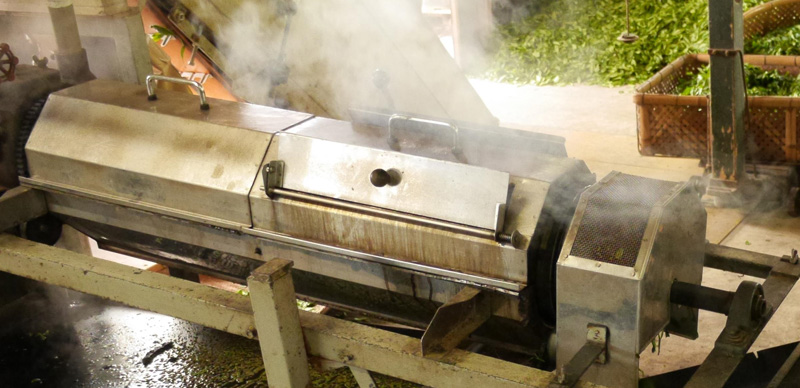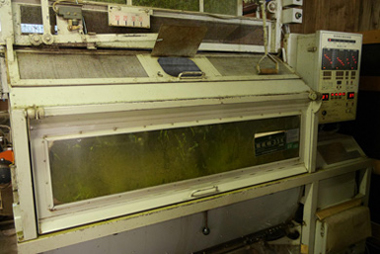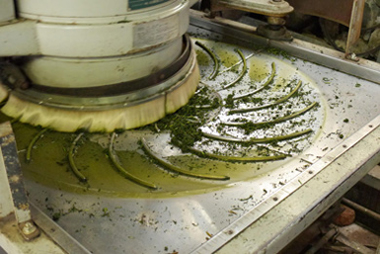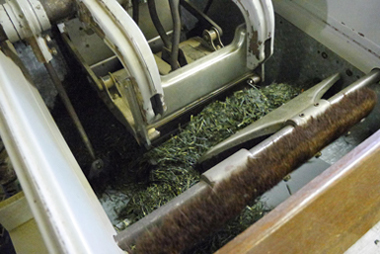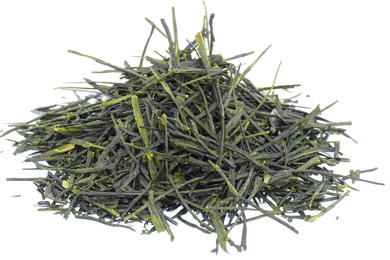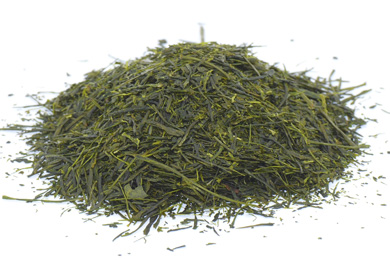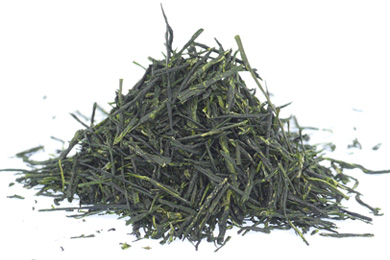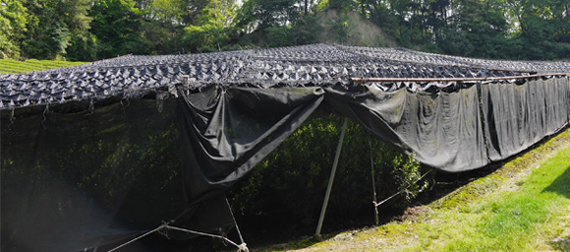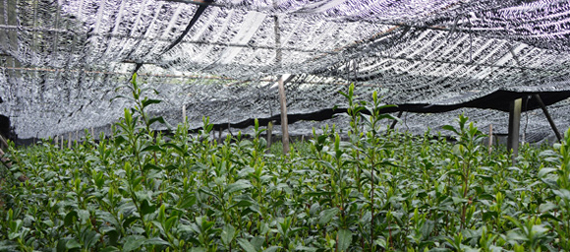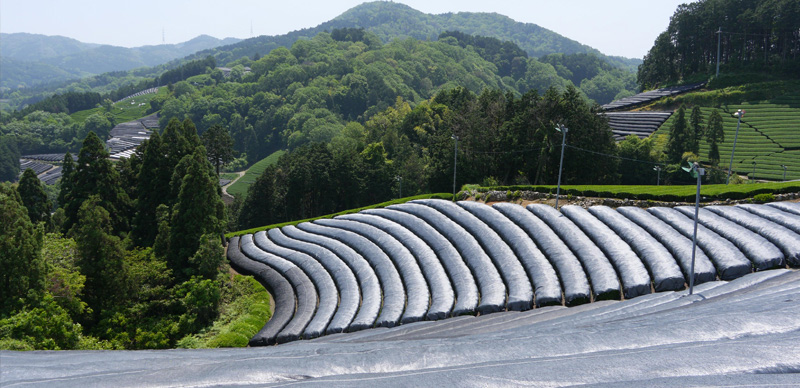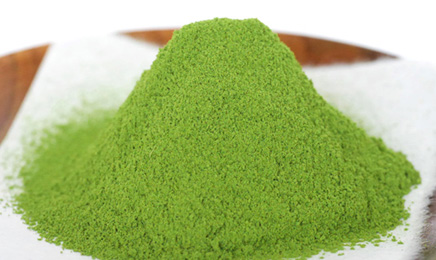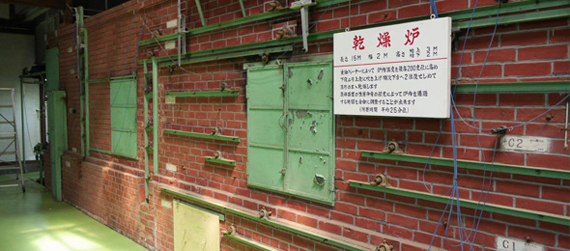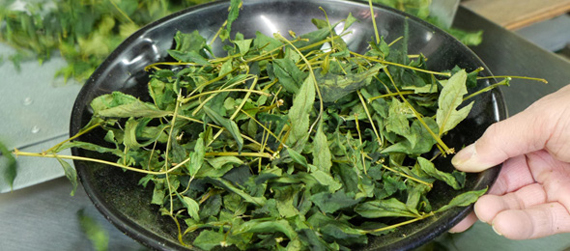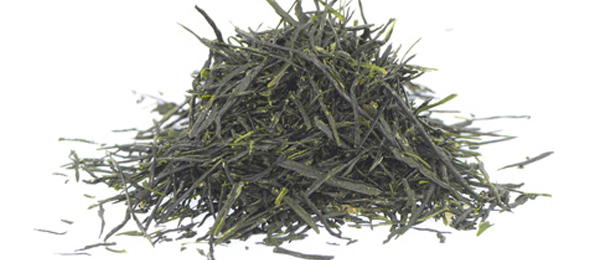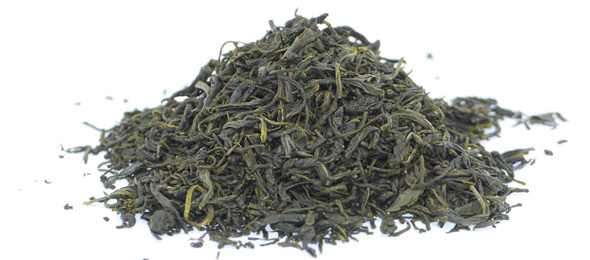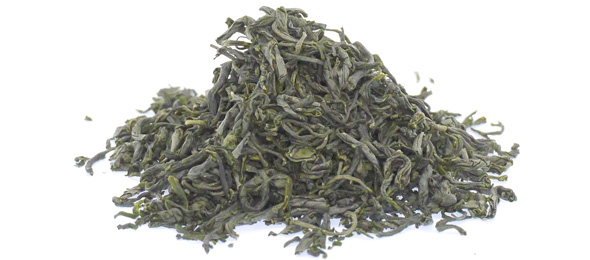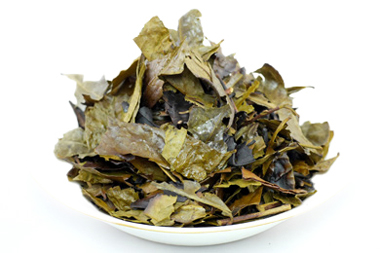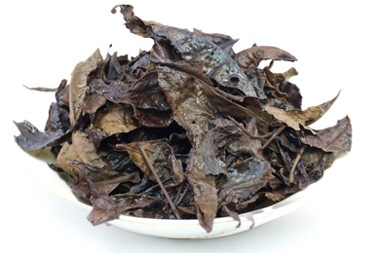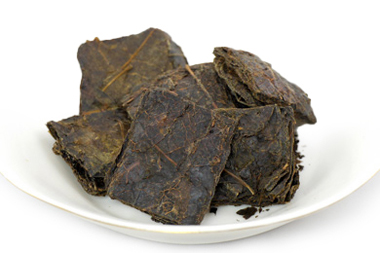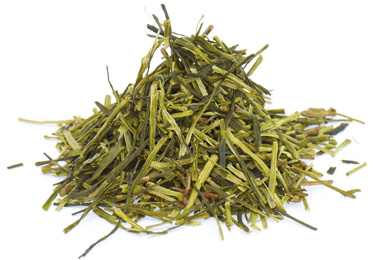An overview of Japanese tea types
Exploring the world of Japanese tea can be intimidating: the variety of different teas might be overwhelming, some stores use arbitrary names for products, etc. It may be hard to know where to start. The following sections will provide the necessary tools to navigate the world of Japanese tea, starting with a guide to the different types of teas from Japan (these sections will only discuss in detail teas made using camellia sinensis, not other types Japanese infusions such as mugi-cha and soba-cha).
What is Japanese tea?
Ninety-nine percent of the tea produced in Japan is green tea. In other words, most teas are unoxidized. In contrast, black and oolong tea leaves undergo an oxidation process (often inaccurately described as fermentation). To halt the enzymes responsible for this oxidation, the leaves must be heated after they have been harvested. The most widespread heating method in the world is roasting, which is to say that the leaves are placed directly on a hot surface. Other heating methods are used as well, such as boiling (now very uncommon) and deep steaming (heated with steam).
Steaming is most commonly used technique in Japan and nearly all green teas are steamed, including senchas, gyokuros, kabuse-chas, tamaryokuchas, and even matchas. Only kama-iri chas, a small part of all green teas, are heated directly to stop oxidation.
The process of steaming is seen to be fast and efficient. The enzymes are halted the moment the leaves come into contact with water droplets suspended in the air; the droplets release a large amount of latent heat and are produced by water moving from a gaseous to a liquid state.
Thus, it could be said that the quintessential Japanese tea is a steamed green tea.
Looking at the history of Japanese tea since the 8th century, the tea production methods we know today are very recent developments. In the 19th century, the Uji tea production method became widely used. This technique was developed by Nagatani Sôen in 1738 and it involved rolling steamed leaves (other rolling and steaming techniques had been previously used). Major improvements to this technique were made in Shizuoka from the middle of the 19th century, which allowed producers to meet the primarily US demand for Japanese tea. During the second half of the 19th century and first half of the 20th century, Nagatani Sôen’s method would be successfully reproduced by machine with outstanding efficiency.
Thus, another way to characterize Japanese tea is by its unique mechanical production method that is generally superior to manual production methods.
Sencha
In 2019, sencha represented 53% of the raw tea production in Japan. This figure may seem low, but it needs to be put into perspective; 53% is the portion of all production, of all harvests combined, including low-grade bancha meant for hojicha and bottled products. If we only consider the spring harvests (first harvest, [jpn.] ichibancha) used for high-grade tea, sencha represents a larger portion, around three quarters, of the production. Sencha is the place to start to exploring Japanese tea and, because of its variety and richness, it will always be something you can return to deepen your understanding of Japanese tea.
To dry the leaves after they are picked, they are steamed, rolled, pressed and then heated. There are four main pressing and rolling stages: 1. The main pressing stage (the leaves rolled and heated), 2. The rolling stage (a simple circular pressing of the leaves without heat), 3. The second pressing stage (leaves are rolled and heated), 4. The final pressing stage (leaves are rolled and heated).
Afterwards, the leaves are dried with hot air to give a raw tea (called aracha) with a moisture content of about 5%. The parts of this raw tea are then sorted to separate the stems, powder, different sizes of leaves, etc. After this, the tea undergoes a final stage of drying, or roasting called hi-ire in Japanese, to lower the moisture content to approximately 3%. This last stage is essential and once complete, the tea is considered finished.
Nowadays, sencha is separated into two broad categories: moderately steamed “futsûmushi sencha” and deep steamed “fukamushi sencha,” a newer sencha from the 1950s. Some of the other terms used are “asamushi” (with the meaning of light steamed like “futsûmushi”), “chûmushi” (moderate steamed), and even “tokumushi” (special steamed). However, in the absence of well-defined standards, only the terms “futsûmushi sencha” and “fukamushi sencha” are used by governing organizations such as the Japan Tea Central Association. While there is a large variety of teas, the ones that fall in the category of “futsûmushi sencha” have unbroken leaves that produce a clear and transparent infusion. In contrast, “fukamushi senchas” have broken leaves and give an infusion that can be cloudy.
Shading?
Senchas are generally seen to be full sunlight teas, which is to say that they come from tea gardens without shading. However, in reality, most of the senchas are somewhat shaded to meet the demand for teas with more umami and teas with a greener colour (this is discussed in the gyokuro section below).
Lastly, the wide diversity of cultivars (or varieties if talking about wine) add to the aromatic richness to the large category of sencha.
This large category encompasses teas with radically different aromas and of many different levels of quality, from the humblest to the very best.
Gyokuro
Gyokuro is often seen as a luxury Japanese tea, but this perception is inaccurate as there is a wide variety of Gyokuros. Furthermore, this perception gives the impression that gyokuro is superior in quality to sencha. This view is totally false. Gyokuro and sencha are two different types with different ways of being consumed. It is impossible to compare these two types in terms of quality.
What makes gyokuro special is that it comes from a tea garden where the trees will be shaded for at least 20 days before a planned harvest. They will sometimes even be shaded for more than forty days. In every other respect, the producing method is largely the same as sencha.
Nevertheless, it should be noted that there are many shading and harvesting techniques, which can significantly affect the quality of the final product.
● Shizen-shitate tea gardens, with ceiling-shelf-shading and manual harvests
This is the original method. It produces the most authentic and highest-quality tea.
Unlike standard tea gardens, the tea trees are unpruned, meaning they must be picked by hand. Once harvested, the trees are cut very low and then allowed to regrow for a year. This is why there is only a single harvest each year. The tea garden is also ceiling-shelf -shaded (tanashita), which is to say that it is covered by a canopy that can be walked under.
The canopy used can be made of natural (bamboo and straw) or synthetic material (there are simple, dual- and triple-layered canopies, which allow the shading strength to be regulated).
● Standard tea gardens
There are numerous types of standard tea gardens.
・Handpicked harvests / ceiling-shelf shading
・Mechanical harvests / ceiling-shelf
・Mechanical harvests / direct covering (as with certain senchas, synthetic nets that do not allow people to walk under them are placed directly on the trees).
Why are tea trees shaded?
Shading produces leaves that are very rich in umami.
Tea tree roots absorb nitrogen from the soil to produce the amino acids responsible for umami. Then, photosynthesis converts the amino acids into astringent tannins in the leaves. By shading the trees, it slows this process and allows the leaves to retain more umami.
Furthermore, shading helps prevent the loss of caffeine, meaning shaded teas have a higher caffeine content.
Gyokuro is prepared with very dense infusion, a lot of leaves and very little water, to emphasize the umami. Tepid water is also used to limit the activation of astringent tannins. It is an espresso of Japanese tea.
Traditionally, gyokuro was produced in Kyôto (from Uji), but Fukuoka Prefecture is now the leader with a similar yet distinct style of gyokuro from Yame. While the area is less well known, Asahina in Shizuoka also produces gyokuro.
Tencha / matcha
The tea initially produced, the raw material, is called tencha. After the tencha is ground, it becomes matcha.
Even if this is not an everyday tea in Japan, it is the only type of Japanese tea that has seen its production continue to soar since the 90s. However, it should be noted that this increased production is largely medium- and low-grade matcha, intended for confectionaries and milky beverages.
An authentic matcha is one that comes from a shizen-shitate tea garden (see the gyokuro section above), is dried in a tencha-ro oven, is not rolled and is ground using stone mills. While there are no exact figures, it is estimated that this type of matcha represents only 3% of all Japanese matcha sold around the world.
Tencha is harvested in the same ways as gyokuro, but it also comes from second harvests and even, in some cases, from unshaded autumn harvests called akiten.
Lowest-grade matchas are ground using ceramic ball mills, not stone mills, that produce a less fine powder.
What makes tencha production distinct is that after steaming, the leaves are dried in a large brick oven (tencha-ro) without being pressed or rolled. Simpler ovens (kan.i-ro) are used for lower-grade products.
Matcha does not have a well-defined grading system and the “ceremonial grade” does not exist in Japan. This grade was invented by western vendors, so you should instead ask about the matcha’s tea garden, how it was harvested, how it was shaded, etc.
There is not a type of new tea, or shincha, for either gyokuro or matcha. These teas must be allowed to mature before they can be drunk. Generally, if matcha sold the same year it is harvested, it will be kept as unground tencha and vendors will wait until autumn before selling. In Uji, there are those that believe the tea needs at least a year to mature.
The monk Eisai is said to have brought matcha from China in 1191. During this period, tea gardens were unshaded. The practice of shading only started in the 16th century.
Tencha was traditionally produced in Kyôto (in Uji), but with Nishio, Aichi Prefecture became an important production region specialized in commercial matcha.
Kabuse-cha
As its Japanese name suggests, Kabuse-cha is a “covered” green tea. In other words, it is shaded, usually with direct covering. The tea is shaded for less time than gyokuro, but for longer than most shaded senchas and for about two weeks. In every other respect, the production method is the same as for sencha.
Tamaryokucha (Steamed)
Even if tamaryokucha is very popular in the west, it is far less well known in Japan.
Sometimes called guricha, tamaryokucha usually refers to mushisei-tamaryokucha. It is a steamed green tea, unlike kamairi-sei tamaryokucha presented in the following section, which is directly heated like Chinese green tea. While it is steamed like sencha, the methods of pressing and drying are slightly different. Tamaryokucha does not undergo the final pressing stage of sencha, meaning that its leaves do not have sencha’s characteristic needle shape. To replace this missing step, the tea is dried two additional times without being pressed.
This method was developed in the 1920s with the aim of producing a tea that resembled kama-iri cha, Chinese green tea, using the infrastructure already in place for steamed tea. The goal was to create a tea that could be mixed with Chinese green tea and export it to the Middle East through the Soviet Union.
Nowadays, tamaryokucha is primarily produced on Kyûshû, in Ureshino in Saga Prefecture, in Sonogi in Nagasaki Prefecture, and in Kumamoto Prefecture.
This tea is now commonly produced using shaded tea plants and fukamushi style steaming.
This production method tends to enhance a tea’s warmth, usually as warm sweet aromas that go well with umami from shading, to give an easily accessible tea.
Kama-iri cha
The final type of green tea discussed here has a longer history than sencha. Kama-iri cha was once made using a method that first appeared in China during the 17th century, which involved heating the leaves directly on a hot surface to halt oxidation and then pressing the leaves to dry them. This method is now rarely used, having been replaced by steaming in the 19th century.
This tea is officially named kamairi-sei tamaryokucha, after the shape of its dried leaves that resemble steamed tamaryokucha leaves.
Kama-iri cha is primarily produced on Kyûshû, in Miyazaki and Kumamoto Prefectures. This type of tea is not very astringent, but is very fragrant and has strong empyreumatic notes. Relatively unknown even in Japan, this is nonetheless an interesting and easily accessible tea.
Black and Oolong Teas
As surprising as it might be to hear, Japan has produced black tea since the second half of the 19th century. While the tea industry was making great strides with its exports of sencha to the West, the government also attempted to develop black tea production to export to foreign markets. Despite its efforts, black tea production was never a success and nearly completely disappeared by the beginning of the 1970s.
In the 1980s, the production of black tea slowly resumed thanks to a handful of passionate producers. Since the 2010s, it has soared in popularity and quality. Production is still tiny compared to Japanese tea as a whole, but black tea is becoming increasingly interesting and we at Thés du Japon strive to present the very best.
There still remains some black tea cultivars from the period when the government was supporting black tea production. Benihomare is the oldest of these cultivars, and was selected from Indian tea seeds Tada Motokichi brought to Japan in 1878. There are also Benihikari and Benifûki, which are more recent and widespread black tea cultivars. Additionally, there are wonderful black teas made with green tea cultivars, such as Izumi, Kôshun, etc.
Nowadays, Japanese black tea is sometimes called wa-kôcha (literally meaning “Japanese black tea”) or ji-kôcha (“local black tea”).
It is also important to remember that black tea is made with the same leaves as green tea, but using a different method. While officially described as being “fermented,” the process used is in fact oxidation and not fermentation. After harvest, the leaves are withered, then pressed before being oxidized. Finally, the leaves are heated to halt the oxidation and to dry them (there are sometimes other roasting stages after this).
Japan also produces oolong tea, but the process for making oolong is more confidential and still being developed.
Banchas
I write “banchas” in the plural and not the singular form because the term refers to many different things. To start, the term is most commonly used to describe rough senchas from late harvests. The term is also used for autumn harvests (shûtô-bancha) and for the late thick leaves picked after the first harvest (sometimes called kari-ban).
The term bancha is also used for a variety of local traditional teas with diverse productions methods (boiling and sun-drying the leaves, fermenting the leaves, etc.). Now very rare, this was once a popular everyday product that was enjoyed with meals. Up until the post-war period, this was the most popular product among the average person in Japan. It was more popular than sencha and far more than matcha. Banchas include kyô-banchas, mimasaka banchas, goishichas, etc.
Other Types of Teas
The following teas are not tea types like those described above, as they are derived from the previously mentioned teas.
● Hôji-cha
This is usually produced by roasting at high heat a low-grade green tea.
● Genmaicha
Grilled rice is added to green tea. Generally, this will be a low-grade sencha or bancha.
● Kuki-cha
Kuki refers to stems sorted during the finishing stage of sencha or another type of tea. These stems are sometimes sold as kuki-cha or used as the primary material for hôji-cha.
Kuki-cha is what is called a “demono ”.
● Kona-cha
Another type of demono, this is the powder obtained as the raw aracha is sorted.
● Me-cha
Also a type of demono, these are the small pieces of buds sorted as the raw aracha is finished.
● Funmatsu-cha
This term refers to powdered green tea, which is not matcha. The raw material is very low-grade and the way it is ground can vary (freeze-dried, etc.). Generally, Funmatsu-cha is what is used for instant green teas. This tea has also replaced kona-cha in most sushi restaurants.

